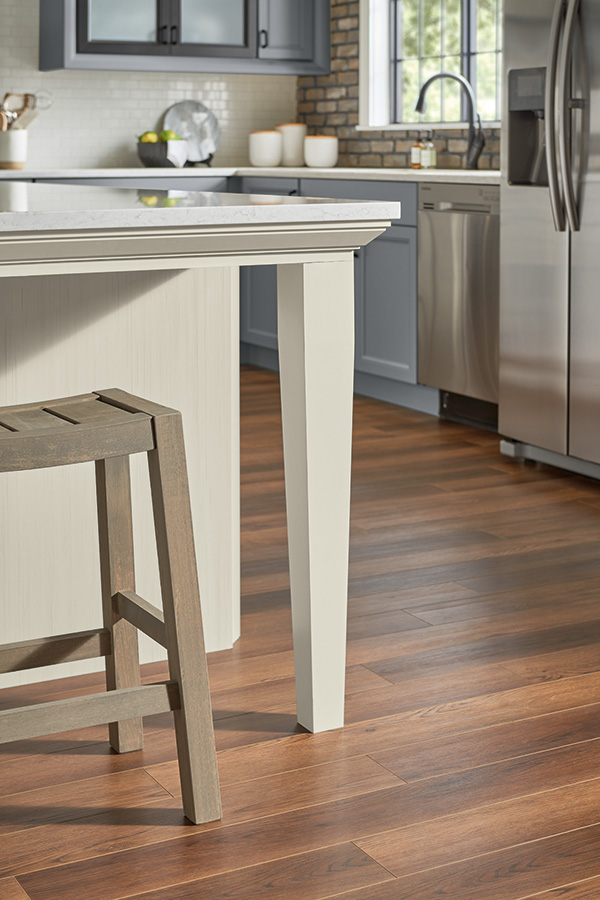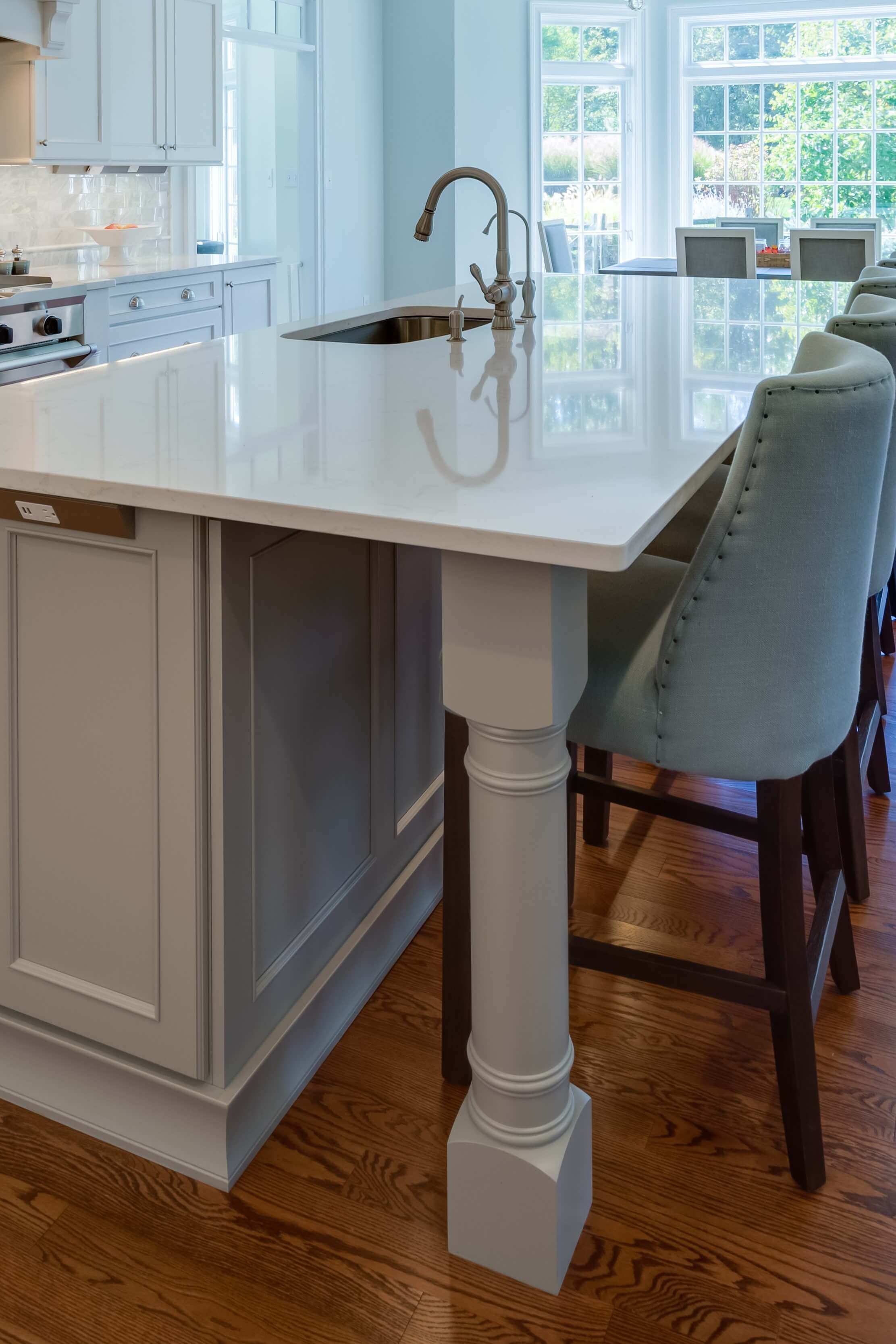A Comprehensive Overview to Picking the Right Kitchen Island Leg
Top Considerations When Selecting a Kitchen Island Leg for Modern Kitchen Insides
In the world of contemporary kitchen insides, the selection of a cooking area island leg is crucial, influencing both visual appeals and performance. Key factors to consider include the selection of products that balance with modern style, along with the leg's stability and assistance to make certain long-lasting efficiency. Additionally, elevation and percentages need to be thoughtfully reviewed to preserve a cohesive look. As these aspects link, they increase even more questions about how to accomplish the excellent balance between style and functionality, leaving one to ponder the implications of each decision on the total kitchen area experience.
Material Selections
When it comes to choosing a kitchen island leg, product choices play a vital role in both looks and capability. kitchen island leg. One of the most common materials include wood, metal, and composite options, each offering prospective downsides and distinct benefits
Timber is favored for its warmth and timeless appeal, providing an ageless appearance that complements numerous cooking area styles. It is highly versatile, enabling personalization in regards to finishes and shades. Nevertheless, wood may require more upkeep to avoid bending or damages from wetness.
Metal, on the other hand, brings a commercial and modern-day style to kitchen area islands. Stainless steel and functioned iron are popular selections, recognized for their resilience and resistance to put on. They can endure the roughness of everyday usage however might do not have the heat related to timber.
Composite materials, such as crafted wood or artificial blends, provide a balance in between price, longevity, and visual appeals. These alternatives are commonly designed to simulate the look of all-natural products while supplying resistance to scrapes and spills.
Eventually, the choice of product need to align with the general kitchen layout and meant use, making certain that the kitchen area island leg is both practical and visually enticing.
Style and Layout
The style and layout of a cooking area island leg significantly contribute to the general aesthetic of the space, matching the selected product. When choosing the leg style, take into consideration the architectural style of the kitchen. For instance, smooth, minimalist legs made from stainless-steel or acrylic harmonize with contemporary layouts, while ornate, turned timber legs improve traditional or farmhouse appearances.
Additionally, the coating of the leg can influence the visual effect; a polished chrome or matte black surface might evoke modern style, while distressed timber talks to rustic appeal. The leg's shape additionally plays a critical role-- directly, angular kinds convey an even more commercial feeling, whereas curved or tapered legs introduce a softer, much more inviting appearance.
Integrating attractive elements, such as decorations or makings, can add character and character to the kitchen island, further improving its function as a prime focus. Ultimately, the selected leg design must not only align with the overall kitchen area style yet additionally show the property owner's individual taste, making certain that the kitchen area island comes to be a unified and useful centerpiece within the modern cooking area interior.
Elevation and Proportions
Achieving the right height and percentages for a cooking area island his explanation leg is important for both performance and aesthetic appeals. Kitchen area islands usually range in height from 28 to 36 inches, depending on their meant usage-- whether as a cooking surface area, dining area, or workspace. Criterion counter top elevation is roughly 36 inches, making it crucial that the legs you pick complement this elevation to offer a smooth, integrated appearance.
Percentages likewise play a vital duty in the aesthetic equilibrium of the kitchen. A slender leg may be proper for a minimalistic or modern island, while a much more significant leg might be needed for rustic or standard styles.
When choosing the height and proportions of the kitchen area island leg, maintain in mind the total design theme of your cooking area. This interest to detail not just boosts the functionality of the area yet likewise adds to a visually enticing and cohesive interior decoration.
Security and Support
Regularly guaranteeing security and assistance in cooking area island legs is necessary for both safety and security and capability. A well-constructed kitchen island should withstand day-to-day use, consisting of weight from devices, food prep work, and celebrations. The choice of legs should focus on durable products and layouts that can offer appropriate support.
When reviewing stability, think about the leg's product-- steel, aluminum, or hardwood frequently provide premium strength compared to lighter choices. In addition, the design ought learn this here now to feature a wide base to disperse weight equally and decrease the risk of wobbling or tipping. Legs created with an A-frame or cross-bracing can significantly enhance security.

Integrating these considerations will certainly not only improve the general safety of the kitchen space yet additionally boost the longevity and functionality of the kitchen island, making it a valuable focal point in modern-day kitchen area insides.
Ending Up Touches
When it involves finishing a kitchen island, thoughtful ending up touches can significantly improve both its visual appeal and functionality. Choosing the appropriate leg style is critical, but enhancing it with ideal details can transform the whole space. Think about including attractive elements such as toe kicks or walls that match the cabinetry or flooring to produce a smooth appearance.

A natural shade combination and material choice will elevate the kitchen island, making it a captivating focal point. By paying attention to these ending up touches, home owners navigate to this site can produce a kitchen island that is both gorgeous and useful, catering to their lifestyle and style preferences.
Verdict

In the realm of modern kitchen area interiors, the selection of a kitchen island leg is crucial, affecting both aesthetic appeals and capability.The design and layout of a kitchen island leg dramatically contribute to the general aesthetic of the space, complementing the chosen product.Attaining the best height and percentages for a kitchen area island leg is critical for both functionality and aesthetics.Regularly ensuring stability and support in cooking area island legs is important for both security and performance.In summary, choosing a kitchen island leg for modern insides requires mindful factor to consider of product selections, design style, elevation, percentages, and security.